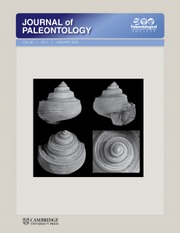Article contents
An Examination of Life History and Behavioral Evolution Across the Ediacaran–Cambrian Transition
Published online by Cambridge University Press: 15 October 2015
Extract
With the 1859 publication of On the Origin of Species, Charles Darwin posed contention against his synthesis on the history of life. His dilemma specifically regarded that the geologically sudden appearance of complex shelly invertebrates at the Cambrian Explosion followed an incomprehensible absence of a long-standing gradual transition to such forms. Indeed, as quoted from Chapter 10 of the sixth edition, “To the question why we do not find rich fossiliferous deposits belonging to these assumed earliest periods prior to the Cambrian system, I can give no satisfactory answer… the difficulty of assigning any good reason for the absence of vast piles of strata rich in fossils beneath the Cambrian system is very great… The case at present must remain inexplicable; and may be truly urged as a valid argument against the views here entertained” (p. 286–288). In the 155 years since this assertion, paleontologists focusing on the strata of the Ediacaran–Cambrian transition have uncovered a rich evolutionary history prior to the radiation of animals, but our resulting discoveries have neither been without debate nor unraveled the intricacies suggested by Darwin's dilemma. While we are continuing to learn from both geological and paleontological records, the organisms, their expanding ecosystem intricacy, and the increasing complexity of their behaviors during the Ediacaran and Cambrian periods are yet not well understood. With rapidly growing data and ideas, this transition in evolutionary history has become one of the intellectually richest periods in our record of life on Earth.
Information
- Type
- Research Article
- Information
- Copyright
- Copyright © The Paleontological Society
References
- 1
- Cited by

